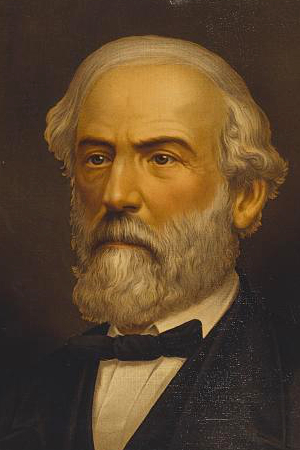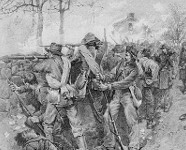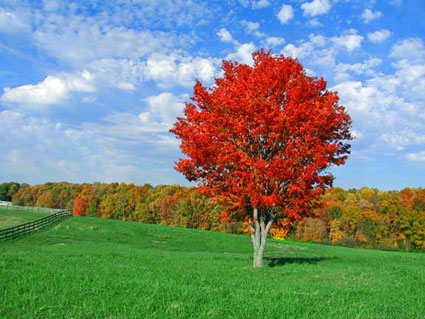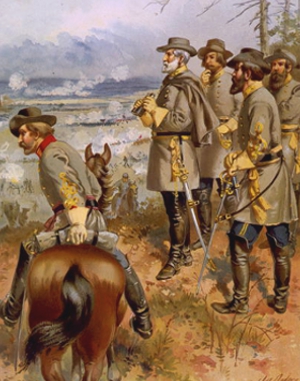
Above: Illustration of Robert E. Lee overlooking the battle of Fredericksburg, Virginia. Right: Scene of the battle through the streets of Fredericksburg, 1862. Both images courtesy Library of Congress.
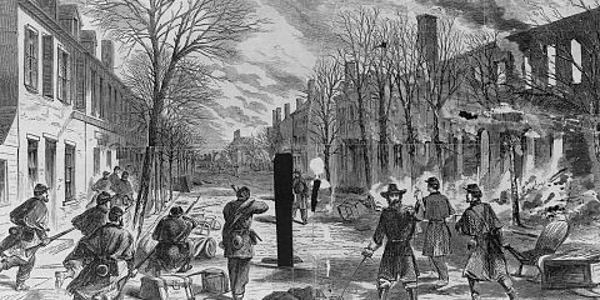
Fredericksburg
Fredericksburg is a town where history unites with the present, and at times becomes overwhelmed by both. It is the site of Fredericksburg and Spotsylvania National Military Park, which is actually four Civil War battlefield parks in one, covering the battles of Fredericksburg itself, plus the battles of Spotsylvania and the Wilderness and Chancellorsville to the west of town, plus the Stonewall Jackson shrine to the south. You're going to need a map or an app.
Click here to Sponsor the page and how to reserve your ad.
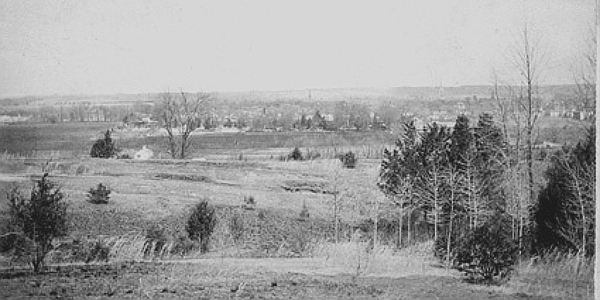
Fredericksburg Then
Fredericksburg wasn't really expecting to host a battle near the end of 1862. In fact, there were probably more than a few soldiers in both armies who thought they were about to go into winter camp. But that was not what Ambrose E. Burnside, newly in command, intended. He would march his 120,000 man army forty miles to the town, cross those troops on pontoons, then command them to take the city, then the heights of Marye's on the other side of town, all this despite an enemy commanded by the brilliant General Robert E. Lee, who would repulse attack after attack from their commanding position behind the stone wall of the Sunken Road and the heights beyond them. 12,600 federal troops were killed, wounded, or missing by the end of that December day, less than half that for the Confederates. And the fateful attack on the Sunken Road had caused two-thirds of those casualties for the Union Army.
What Fredericksburg is, is an amalgam of so much history spread about the city and its environs, that it can seem disjointed and wonderful at the same time. It is a story of a battle through the town, of antebellum mansions that were used as headquarters, of a river that was breached by pontoons that would lead to disaster on a heights on the other side of the city, plus a mud march of such muck and mire after the fighting was done that it is known as "the mud march." Not a whole lot more to say; that name conjures it all up well. On this page, and the subsequent pages about the other units of the park that are linked to your left, we'll talk about that history of war, plus the history of the area before and after. It's a wonderful story. It's a disjointed theme. It makes you want to come back for more.
The city of Fredericksburg itself is a busy place, now almost overwhelmed by the route that allows quick travel up and down the east coast, Interstate 95. That's not been a good thing for Fredericksburg history, in our opinion, but it's true. If you are expecting Gettysburg, this isn't Gettysburg. The charm and open fields are predominantly missing. If you're thinking Antietam, the same is true, although the Spotsylvania and Wilderness units are picturesque and open just like that Maryland battlefield. But what Fredericksburg has that those others do not, is a buzz and a Civil War feel with antebellum aspects, both missing and not particularly appropriate at either Gettysburg or Antietam. And this is a Confederate story of victory, and a disaster for the Union under reluctant commander Ambrose Burnside. Yes, he's better known for those sideburns, or should we say, better thought of.
Photo above: View from Marye's Heights after the war. Unfortunately this view, unlike at Pickett's Charge in Gettysburg, has not been preserved, as development has, outside of the hill itself, the Visitor Center, and Sunken Road, overtaken the vista. Courtesy National Park Service. Below: The Sunken Road in current times. Courtesy National Park Service.

Fredericksburg Now
What you're going to see and hear in Fredericksburg is the story of a river, the Rappahannock, and how it figured into the city's fortunes, both in war and outside of it. What you're going to witness is commanding views from those mansions that manned the high society of the south, plus the cannons of battle. What you're going to hear is the story of a battle that saw a Union charge up a Marye's Heights hill and a stone wall where the south basically mowed down their counterparts. What you're also going to see is an example of what not to do with a historic battlefield, because Fredericksburg did not protect their resources as well as they could have. There is not Pickett's Charge here to witness; there are homes in the way.
Fredericksburg and Spotsyvania National Military Park - Today the park visitor center is the starting off point for those four distinct units that cover four battles of the Civil War. Beyond the park, however, is a plethora of history spread on both sides of the Rappahannock River from the mansions of Chatham and Kenmore to museums on James Monroe and George Washington's Ferry Farm.
Minute Walk in History
Take a walk with us among the many historic battle walks that the staff at the Fredericksburg and Spotsylvania National Military Park did over the days of the 160th Anniversary of the Battle of Fredericksburg in December 1862 won by the Confederates. At places like Marye's Heights, where a charge by the Union failed again and again, to the momentary breakthrough by the Union on the southern edge of the field of battle at Prospect Heights.
T-Shirts and Souvenirs

Fredericksburg and Spotsylvania National Military Park T-Shirts and Souvenirs from the official merchandise of America's Best History. Great for Civil War and American History fans.

Fredericksburg
Things You Should Not Miss
1. Take the ranger tour of the Sunken Road and Marye's Heights. Even though we're critical of the preservation efforts here, there is no still no better place to hear about what happened during the battle. It is located outside the Visitor Center. The unfortunate part is the viewshed of those fields has been virtually eradicated by development. You'll have to use your imagination alot, but the story and fighting here was as intense as any during the War of Rebellion.
2. Don't miss going to Chatham Manor. Part of the park, but on the other side of town and the river, this antebellum wonder served as a headquarters during the battle and has a commanding view of the city.
3. Make it out the far reaches of the park on Prospect Hill where the city does not intrude. Take one of the ranger tours there. This really helps give you the feel of how the land and park looked back in 1862. You won't be crowded either. It's quiet and reflectful there.
4. Take a walk downtown. There are plenty of historic buildings along the river. Stop by first at the downtown visitor center to get your bearings and a map. You can even take a trolley ride.
Photo above: View of a cannon and the vista of the town of Fredericksburg from Chatham Mansion. Courtesy National Park Service.

Get Baseball History and Books at Stat Geek Baseball, including Fields of Gold, Baseball's Best Glove Work.


